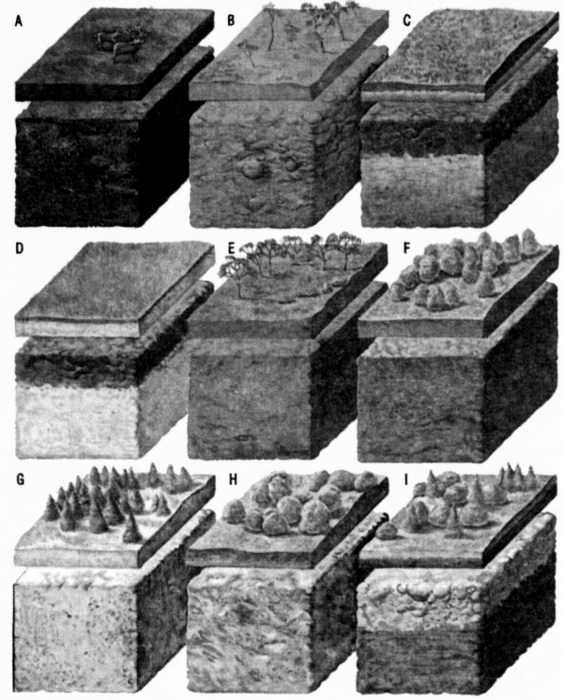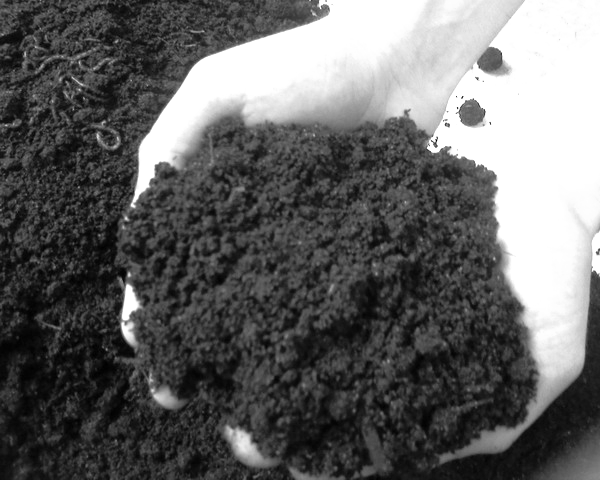
- •S. Seifullin
- •Учебное пособие
- •Для студентов землеустроительного факультета
- •Всех специальностей
- •Английский язык
- •Introduction
- •Insert prepositions if necessary:
- •4. Give your own definitions of the words:
- •5.Render the text ‘Composition of soils’.
- •5. Render the text:
- •6. Retell the text ‘ Structure of soil’:
- •I. Study the following words:
- •III. Make up your own sentences with words given above in exercise 2:
- •IV. What chemical conditions of soil do you know?
- •I. Study the following words:
- •II. Complete the sentences with appropriate words from the text and translate them into your language:
- •III . Say true or false these statements are, correct false ones:
- •IV. Give the characteristics of all soil classifications.
- •I. Study the following words:
- •II. Make up your own sentences with the following word combinations:
- •III. Translate the following sentences into your language:
- •I. Study the following words:
- •II. Define the part of speech of the following words:
- •III. Match the words with their definitions:
- •IV. Put questions to the following sentences:
- •V. Write a short summary of the text ‘Soil and its management’.
- •III. Find opposite words:
- •IV. Find odd words:
- •It is far to conclude from the experiment described in this passage that
- •6. Give a short summary of the text.
- •I. Read and translate the text:
- •II.. Work in pairs. Ask questions according to the model:
- •Plants that move
- •Plants That Glow
- •Comprehension Check
- •II. Define the part of speech of the following words:
- •I. Study the following words:
- •I. Study the following words:
- •I. Study the following words & word combinations:
- •II. Define the part of speech of the following words:
- •III. Translate the following sentences into your language:
- •V. Retell the text ‘Soil assessment and Land evaluation’.
- •II. Make up sentences with the words & word combinations given
- •III. Complete the sentences with appropriate words from the text:
- •IV. Give your own definitions of the words:
- •V. Render the text ‘Land evaluation for Land use planning’.
- •I. Study the following words:
- •I. Study the following words:
- •I. Study the following words:
- •III. Make up your own sentences with words given above in exercise 2:
- •IV. What do you know about mortgage in your country?
- •V. Retell the text ‘Mortgage’
- •I. Study the following words:
- •II. Make up sentences with the words & word combinations given
- •III. Insert prepositions if necessary:
- •IV. Give your own definitions of the words:
- •V. Retell the text ‘Joint Tenancy’.
- •I. Study the following words:
- •I. Study the following words:
- •I. Study the following words & word combinations:
- •II. Discuss the update state and goals of land use planning in our country.
- •III. Read and discuss the following text:
- •IV. Put as many questions as it possible to the text given above:
- •I. Study the following words & word combinations:
- •1. Give the equivalents of the following word combinations in your language:
- •2. Put your own questions to the text “Land Assessment In Kazakhstan
- •3. Read the text and tell what problem they discuss:
- •2. Define the part of speech of the following words:
- •3. Give the synonyms of the following words & word combination:
- •4. Put five questions to the text “Land Administration”
- •5. Give your own definition of the word combination ‘Land Administration’.
- •1. Read and translate the following words:
- •2. Define the part of speech of the following words:
- •3. Explain your own understanding of the words:
- •4. What is your own opinion about cadastre system in our country and abroad?
- •I. Study the followings words & word combinations:
- •I. Study the following words & word combinations from the text:
- •I. Study the following words & word combinations from the text:
- •II. Answer the following tasks to the text:
- •I. Study the following words and word combinations:
- •II. Answer the following tasks to the text:
- •I. Study the following words and word combinations:
- •II. Answer the following tasks to the text:
- •I. Study the following words and word combinations from the text above:
- •II. Answer the followings tasks to the text:
- •I. Study the following words and word combinations:
- •II. Answer the following tasks to the text:
- •I. Study the following words & word combinations:
- •II. Answer the following tasks to the text:
- •Grammar reference Passive Voice 1
- •Passive Voice 2
- •Relative clauses 2
- •Types of questions 1
- •Types of questions 2 Tag or Disjunctive Questions
- •Indirect speech 1
- •Indirect speech 2
- •Conditional sentences 1
- •Verbs with two parts: intransitive
- •Revision
- •Study the following irregular verbs
- •Английский язык для студентов
II. Complete the sentences with appropriate words from the text and translate them into your language:
1. … occur in warm, humid climates .
2. Oxisols are the most … weathered soils.
3. They … the parent material and occur in many climates.
4. They have a … color and … in tropical regions.
5. They are …, well-developed, acid soils.
III . Say true or false these statements are, correct false ones:
There are nine orders (groups) of soils.
Aridisols resemble the parent material and occur in many climates.
Entisols are organic soils.
Oxisols are the most chemically weathered soils.
Histosols form in water-saturated environments, including lakes and bogs.
Spodosols contain iron, aluminum, and organic matter in their B horizons.
IV. Give the characteristics of all soil classifications.

TEXT 9 SOIL CONSERVATION
The soils of farmlands, grazing lands, and forestlands provide many products and recreational areas. Soil conservationists work to ensure the wise use of these soils.
Wise use of farmlands involves maintaining a high level of nutrients and organic matter in cultivated soils. Farmers add organic matter to the soil by plowing under certain green plants. They also add fertilizers and rotate crops to replace nutrients that leaching and growing plants remove. In addition, farmers plow and plant their fields in ways that control erosion.
Grazing lands that have been overgrazed also suffer from erosion. Overgrazing decreases the amounts of plant life and organic matter in the soil, and the soil erodes easily. Ranches conserve grazing lands by limiting the time that their herds graze in one area.
Forestlands also must be protected from erosion. In some cases, foresters leave unusable branches and other parts of trees on the forest floor to add organic matter to the soil. They also develop large groups of trees whose roots protect the soil by holding it in place against wind and water erosion.
I. Study the following words:
Farmlands, grazing lands, recreational areas, ensure, wise, involve, cultivated soils, fertilizers, remove, suffer, wind erosion.
II. Make up your own sentences with the following word combinations:
Grazing lands, wise use, soil conservation, unusable branch, organic matter.
III. Translate the following sentences into your language:
1. Wise use of farmlands involves maintaining a high level of nutrients and organic matter in cultivated soils.
2. Overgrazing decreases the amounts of plant life and organic matter in the soil, and the soil erodes easily.
3. Farmers add organic matter to the soil by plowing under certain green plants.
4. They also develop large groups of trees whose roots protect the soil by holding it in place against wind and water erosion.
5. Ranchers conserve grazing lands by limiting that their herds graze in one area.
IV. Retell the text ‘ Soil conservation.’

TEXT 10 SOIL AND ITS MANAGEMENT
Good farming means proper use of many factors such as natural conditions, land, crops, livestock, machinery, fertilizers and some others. All these factors have to be put together to make the farming system work successfully.
One of the most important points to be taken into consideration in farming is the soil which is known to be a natural resource that supports plant life. It is a mixture of particles of rock, organic materials, living forms, air and water.
During his entire existence upon the Earth man has depended upon the soil either directly or indirectly. Grain, fruits and vegetables are food products obtained by man directly from the soil. Domestic animals consume grain and forage produced by the soil and in turn supply people with meat, milk, eggs and other products used for human food. These are the products obtained from the soil indirectly.
Some good clay and loamy soils are naturally poor. Various factors that make up soil fertility are moisture conditions, plant food, and soil structure. All these components may be regulated by proper management of the soil.
Soil management is the science of tillage operations, cropping practices, using fertilizers, lime and other treatments conducted on, or applied to, a soil for the production of crops.
Plant growth and yields can be increased by applying certain recommended soil management practices, liming, fertilization and irrigation producing, as a rule, immediate yield increases. Good soil management results in better yields and lower cost per unit of production. Fertile soils produce plants that are less affected by diseases and less likely to be attacked by insects. In this case small losses of crops result.
Some time ago attention was centered on such macroelements as phosphorus, nitrogen and potassium. Now, it is well known that in addition to primary plant food elements mentioned, so-called secondary elements (calcium, magnesium, and sulphur) as well as microelements or trace elements (boron, copper, manganese, zinc, and molybdenum) may be highly important for crop yields, for livestock and human health.
That is why all farmers should make soil tests in order to determine whether any essential elements are lacking in the soil and to determine the rate of fertilizers to be applied.
